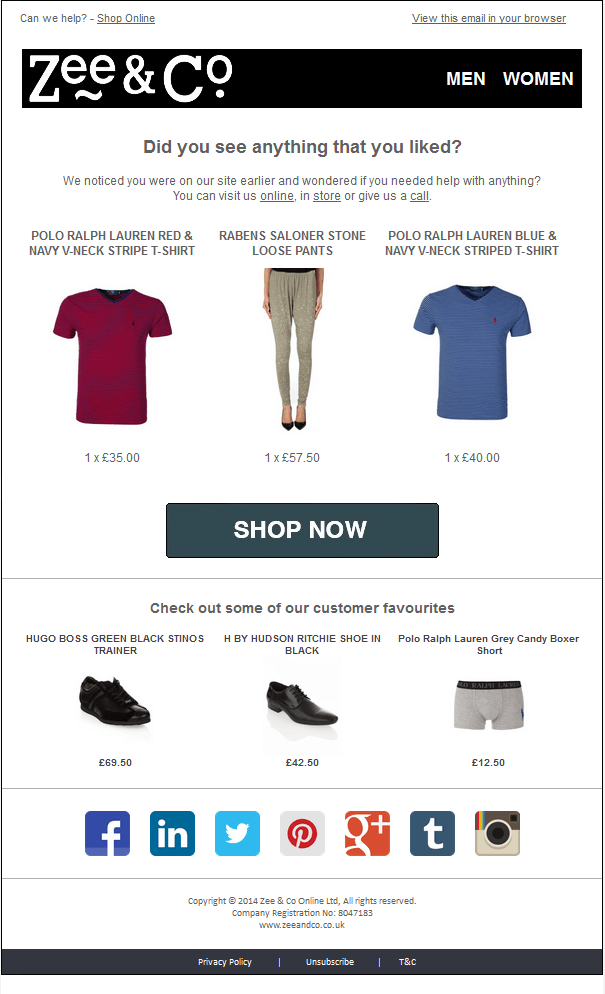Too many email marketers make simple mistakes in their campaigns that make or break their relationship with subscribers. Most of the time, these mistakes are completely avoidable.
A staggering 91 percent of email users have unsubscribed from an email list they previously opted-in to. There must be something they all have in common that turns away visitors and pushes them to leave forever.
To reach your email marketing goals and grow your brand, you need to make sure you’re implementing the best practices. It’s important to create a strategy that increases conversions and produces sales for your business. So, here are X mistakes to avoid this year when creating your email campaigns.
Inconsistent Branding
You want people to see your logo or read your email and know it’s your brand they’re engaging with. They can’t do that if your branding keeps changing.
Branding is what sets you apart from all the competition readily available to consumers. Using consistent practices across all channels is the only way to build a steady, reliable following. This includes sending content to subscribers regularly. Around 39 percent of businesses send emails to their subscribers weekly to keep them in the loop.
A solid branding strategy strengthens brand recognition, builds trust, and helps customers familiarize themselves with your business. If you constantly switch up the different components that make up your branding, it confuses subscribers and could lead them to unsubscribe.
Create branding guidelines for your company that everyone must follow to ensure that every department is on the same page. Setting rules for a strategy lessens the chances of inconsistencies occurring so you can continue growing your email list.
Avoiding Personalization
The more you’re able to set yourself apart from the competitors, the easier it is to stand out and grab your audience’s attention. You need to take a fresh approach to convince subscribers to click on your email out of all the others they have.
A great way to do this is by adding personalization to your email campaigns. People get a ton of emails in their inbox from companies spewing marketing messages and trying to make sales. As a result, consumers have higher demands for relevant, valuable information.
Personalization targets an email campaign to certain subscribers based on the information you have about them. Knowing what made them opt into your email list tells you a lot about what pain points are and what they need from you. From there, you can create personalized campaigns catered specifically to their needs.
To personalize your next email campaign, you can:
- Add a “from” name instead of using the company name. When an email lands in a user’s inbox, the name is one of the first things they see. Adding a human name, like the name of the social media manager, for example, puts a name to the company.
- Address the user by name. If you ask for their name when they opt into your email list, you can add it specifically to their inbox so they feel like you’re speaking to them directly.
- Recommend relevant products. By segmenting your email list, which we discuss in the next point, you can send users products they previously browsed or ones similar to them. That way, they know you’re aware of their interests and they’ll be likelier to purchase.
Neglecting Segmentation
List segmentation is a crucial part of any email marketing strategy. It divides your subscribers into different groups based on various criteria, such as why they opted in, past purchasing behaviors, demographics, and more.
Segmenting your list ensures you’re sending relevant, helpful information and offers to subscribers at the right time. People join your email list for different reasons, and each visitor has a different need or problem.
Zee & Co. uses visitors’ previously viewed items to send them targeted recommendation emails:

Sending subscribers the same information means you don’t know what they want as individual consumers and puts you at risk of them opting out. It also moves customers through the sales funnel at a faster, smoother pace so they’re closer to making a purchase.
Collect all the existing data you have on your subscribers. You’ll use this to determine how you want to segment your list as different companies use different methods based on who they’re targeting. Creating detailed buyer personas off of this information tells you what content to send to whom based on their interests and needs.
Email list segmentation only works through constant testing of different variables. It’s unlikely that the first segmented campaign you ever create will generate tons of traffic and increase sales by a thousand percent. Only trial and error will show you what method works best for your subscribers.
Lacking Professionalism
It’s okay to want to form an exciting, playful bond with your subscribers. But, there is a fine line between fun and amateur. If any part of your marketing messages or branding comes off as immature, it’s a fast, easy way for users to unsubscribe. They want to spend their money on businesses they can respect and take seriously, so your email content must stay professional no matter what the message.
Edit every email before it lands in users’ inboxes, including its grammar and spelling. Repetitive, avoidable mistakes will annoy readers and convince them that you don’t care enough to proofread your work before you send it.
Be respectful and friendly in your email content and avoid coming off aggressive or too promotional in your approach. Your subscribers don’t want you to yell at them to visit your site or buy your products; they’ll opt out and never return.
Instead, include optimized CTAs (calls-to-action) in your campaigns to grab their attention and make them take action. Without one, you’re leaving the guesswork to your subscribers who may not think to check out your website and browse your content. Know where you want them to go when they’re done with your email and use CTAs to navigate them there.
Because a majority of people check their email on their smartphones, avoid adding attachments or large files to your emails. This fails to cater to the mobile experience by making it difficult to engage with your content.
Your Turn
Email gives your business the opportunity to reach as more people in your target audience and market to them effectively. If your email marketing strategy keeps making the same mistakes, it’ll prove difficult to grow your email list as well as your business. Which email marketing mistakes will your brand avoid this year?
e-mail marketing – DepositPhotos


